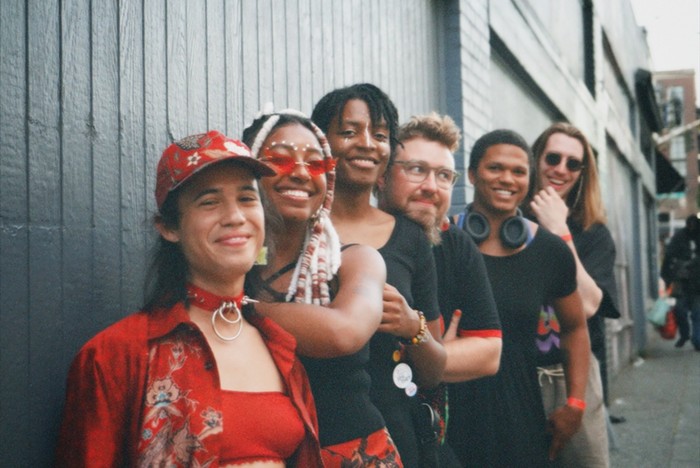Richard Lerman's installation Fences-Borders is a prime example of phonography, one of the most interesting musical movements in recent years, fueled by the profusion of inexpensive, high-quality MiniDisc recorders along with affordable (and sometimes homemade) microphones. Indeed, anyone who has recently researched or built contact microphones probably found Lerman's website and downloaded his helpful PDF schematics.
The essence of phonography entails capturing and transforming field recordings into a listening experience that blurs the boundary between music and everyday sounds. For Fences-Borders, Lerman placed piezo disk contact mics–those stiff, mass-manufactured brass wafers that serve as buzzers in doorbells and smoke alarms—on fences, walls, and amid vegetation along the Arizona/Mexico border. The Mexican state that abuts Arizona? Sonora.
Eerie clanks, sonorous moans, passing trucks, and street ambiance emanate from two sets of speakers. One ordinary pair rests near the ceiling; the other, a set of contact mics sliced and shimmed into a massive coil of bougainvillea, rattle and fizz, transforming the fearsome vegetation (Derek Walcott: "...the barbed wire of bougainvillea thorns...") into a speaker, as if the thorns could talk.
Lerman's room-sized piece cannily exploits the limitations of the gallery. Passing cars outside mesh with the accompanying square of video along one wall; daylight from the street illuminates the sepia-saturated aerial maps that ring the walls; and the dirt-brown carpet, an omnipresent sign of corporate blandness and indecision, is a discreet bourgeois simulacrum of the ruddy earth tramped by migrants every day and night. But Fences-Borders mainly succeeds by exposing the music of everyday sound that lurks along a dusty, disdained border.


















